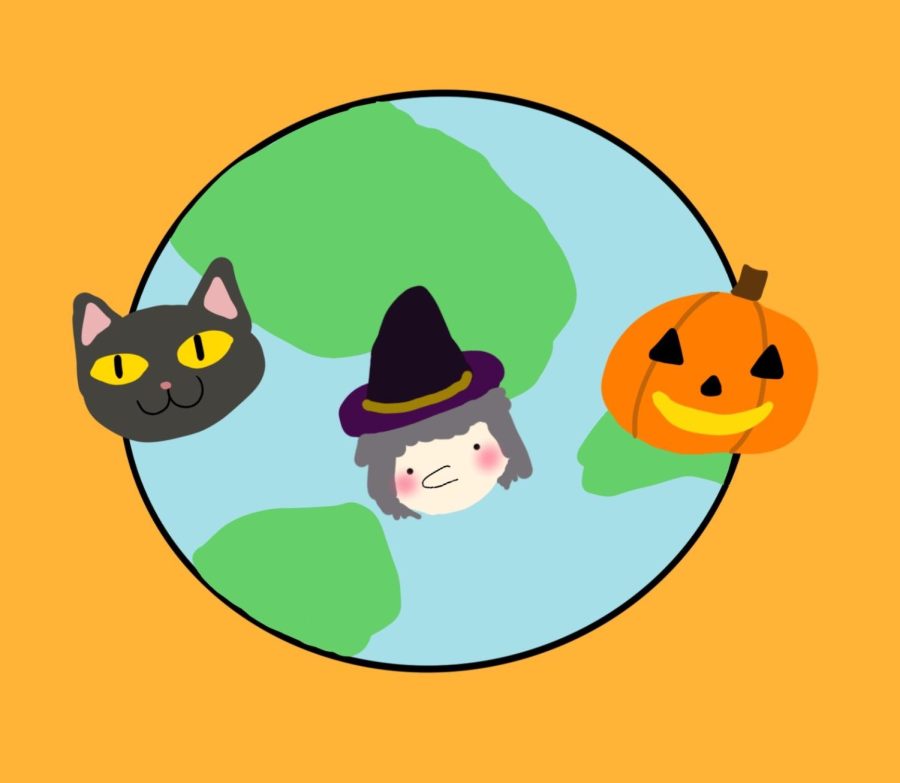Photo Credit: Jasmine Bezotte
Student Reflects On Halloween Around The World
October 27, 2022
Halloween is well known around the U.S. for children who dress up in costumes and then ring doorbells for candy. While the U.S. version is well known, there are some other variants from around the world.
The holiday is named differently in other countries and has different meanings.
Samhain is a pagan religious festival that originates from an ancient Celtic spiritual tradition. Samhain marks the Celtic New Year, the end of summer and the end of harvest season. Samhain signaled the beginning of Winter which the Celts associated with death. So for one night, the souls of the dead, spirits and fairy folk could easily cross over into the physical world. People would dress up to disguise themselves from evil spirits. They would then go from house to house reciting poems for food. Spirits of ancestors were honored with feasts, bonfires were lit to keep the darkness away and Jack-o’-lanterns were carved out of turnips to frighten away the evil spirits.
In Mexico, they celebrate Dia de los Muertos. This two day celebration is said to reunite the living and the dead for one last day together. Families create offerings to honor their departed family members that have passed. The offerings, or sometimes called altars, are decorated with bright yellow marigold flowers, photos of their passed loved ones and the favorite foods and beverages of the person or persons being honored.
Italy celebrates Ognissanti (or All Saints Day). This is a national holiday that calls for the closing of school, work and governmental facilities. This holiday is traditionally a feast day where people celebrate the saints. Other ways people celebrate are by exchanging gifts with other families. The day usually starts with a special midday mass after a colorful procession from the city center. The rest of the day is followed by a great feast and spending time with their friends and family.
In Haiti, they celebrate Fet Gede. Fet Gede is a Voodoo holiday celebrated not only in Haiti, but other countries and other Voodoo communities around the world. People light candles and journey to their ancestors’ burial places while also drinking rum infused with chilies. There are ceremonies done at the end of October and beginning of November to celebrate the holiday. The entire month of November is dedicated to Fet Gede in Haiti. It is also a feast which celebrates the Iwa (spirits) of death and fertility. Vodouists travel in a spiritual pilgrimage to pay their respects to the dead at the cemetery, but they first have to gain permission. Ancestral Services are held at the grave of Papa Gede (the first man who ever died) which is a crossroad considered to be the bridge between life and death. Kwa Baron is said to be the Lwa guardian of the cemetery and the head of the Gedes. Gedes replace the spirits and guardians of the dead.

